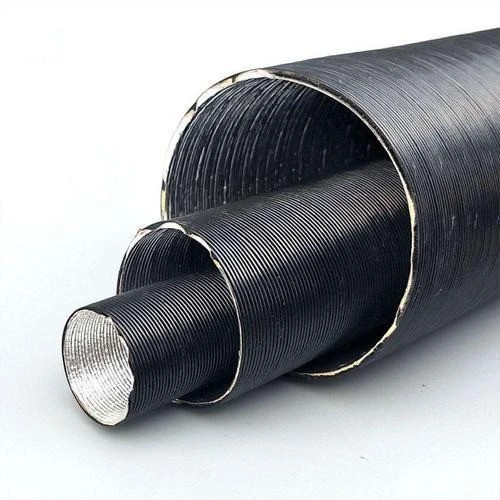Flexible LPG Gas Hose for Safe and Efficient Gas Connections in Various Applications
Understanding LPG Gas Flexible Hoses Importance, Types, and Safety Considerations
In the realm of gas utilization—be it for cooking, heating, or industrial applications—Liquefied Petroleum Gas (LPG) plays a vital role. One essential component that ensures the effective and safe transport of LPG is the flexible hose. This article delves into the importance, types, and critical safety considerations associated with LPG gas flexible hoses.
Importance of LPG Gas Flexible Hoses
LPG gas flexible hoses are crucial for connecting LPG cylinders to various devices such as stoves, heaters, and other appliances. Their flexibility allows for easy installation in tight or awkward spaces, making them an ideal choice for both domestic and commercial setups. These hoses are designed to withstand the pressures of gas transmission while ensuring minimal risk of leaks, which can pose severe safety hazards.
Aside from their functional importance, LPG hoses also contribute to the efficiency of gas appliances. A well-designed and properly installed flexible hose ensures a steady, controlled flow of gas, optimizing the performance of the connected appliance. Furthermore, the right flexibility allows for movements and adjustments, accommodating changes in layout without necessitating a complete reinstallation of gas lines.
Types of LPG Gas Flexible Hoses
LPG gas flexible hoses come in various types, each tailored to specific applications and environments
. Here are a few common types1. Rubber Hoses These are the most common type of flexible hoses. Made from durable rubber, they are resistant to various weather conditions and provide excellent flexibility. However, they may require more frequent inspections and replacements compared to other materials.
2. Stainless Steel Braided Hoses These hoses are often used in high-pressure applications. The stainless steel braiding provides additional strength and protection against external damage. These hoses can withstand extreme temperatures and pressures, making them ideal for industrial uses.
3. Polymer Hoses Made from thermoplastic materials, these hoses offer enhanced resistance to chemicals and UV radiation. They are lightweight and flexible, making them easy to handle and install. Polymer hoses are less common for high-pressure applications but suitable for low-pressure uses.
4. Composite Hoses These are made from multiple layers of different materials, providing unique advantages such as lightweight construction and high flexibility. Composite hoses are particularly useful in situations where standard hoses would struggle due to space or movement constraints.
lpg gas flexible hose

Safety Considerations
Safety is paramount when dealing with LPG, and this extends to the use of flexible hoses. Here are key safety considerations to keep in mind
- Regular Inspections Hoses should be inspected regularly for any signs of wear and tear, including cracks, bulges, or abrasions. Any damaged hose should be replaced immediately to prevent leaks.
- Proper Installation It is crucial that flexible hoses are installed according to manufacturer specifications and local regulations. Inappropriate installation can lead to gas leaks and pose fire hazards.
- Avoiding Excessive Bends While flexible hoses are designed to be pliable, excessive bending can create stress points that may lead to failure. Hoses should not be twisted or sharply bent.
- Use of Correct Fittings Ensure that the correct fittings are used for the hoses. Mismatched fittings can cause leaks and lead to dangerous situations.
- Storage and Handling When handling LPG hoses, care should be taken to avoid exposure to sharp objects and chemicals that can damage the hose. Proper storage in a cool, dry place away from harsh conditions can also prolong the hose’s life.
- Professional Installation and Maintenance It is always recommended to have gas hoses installed and maintained by qualified professionals to ensure compliance with safety standards and regulations.
Conclusion
LPG gas flexible hoses are indispensable in the safe and efficient use of liquefied petroleum gas. Understanding their types and the safety measures associated with their use is crucial for both consumers and professionals. By following best practices in installation and maintenance, users can mitigate risks and enjoy the benefits of LPG with confidence. Safe handling of these hoses not only enhances the lifespan of the connections but, more importantly, protects people and property from potential hazards associated with LPG usage.
-
Top Quality Oxy Acetylene Hoses for Sale Fit for Welding DemandsNewsJul.28,2025
-
The Future of Pneumatic Air Tubes in IndustryNewsJul.28,2025
-
Superior and Reliable LPG Hose Pipe Solutions for Every NeedNewsJul.28,2025
-
Exceptionally Durable and Versatile Premium Braided PVC TubingNewsJul.28,2025
-
Best Adapters for Connecting Garden Hose to PVC Pipe ConnectionsNewsJul.28,2025
-
The Essential Role of LPG Hoses in Safe and Efficient Gas DistributionNewsJul.16,2025














